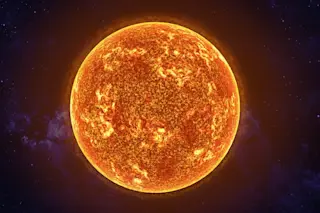Two views of Comet Ison from NASA's SOHO spacecraft show the comet is fading dramatically. (Source: ESA/NASA, annotations by Karl Battams) | Update 10 a.m. MST: I've added a spectacular video to the bottom of this post showing Comet ISON streaking toward the sun. It's from NASA's SOHO spacecraft. | We're just a few hours from Comet ISON's closest approach to the sun, and the news is not encouraging: The sungrazer has gotten dramatically dimmer, according to Karl Battams of the Comet ISON Observing Campaign. The two images above were captured by NASA's SOHO spacecraft. The bottom image was acquired earlier, the top one later. And the dimming is evident. Based on what he's seeing, Battams says he is not at all confident that ISON will survive intact after perihelion, meaning it's closest approach to the sun, which should occur at 1:44 p.m. EST today:
The question on everyone's lips ...














